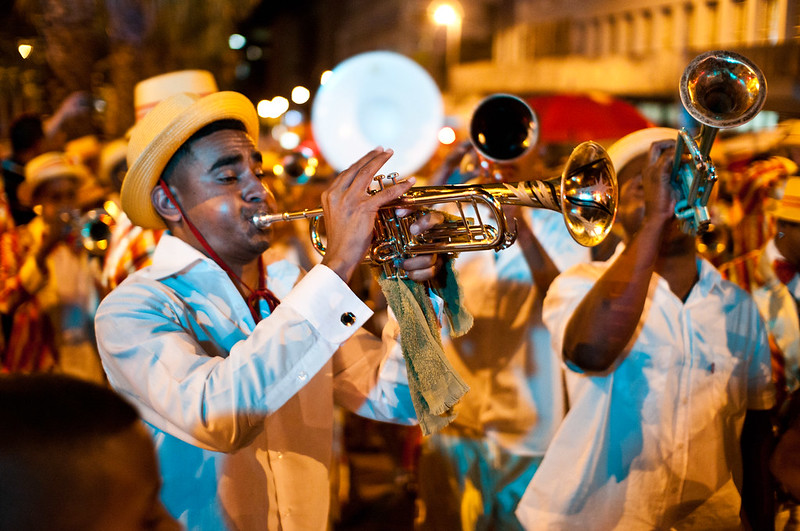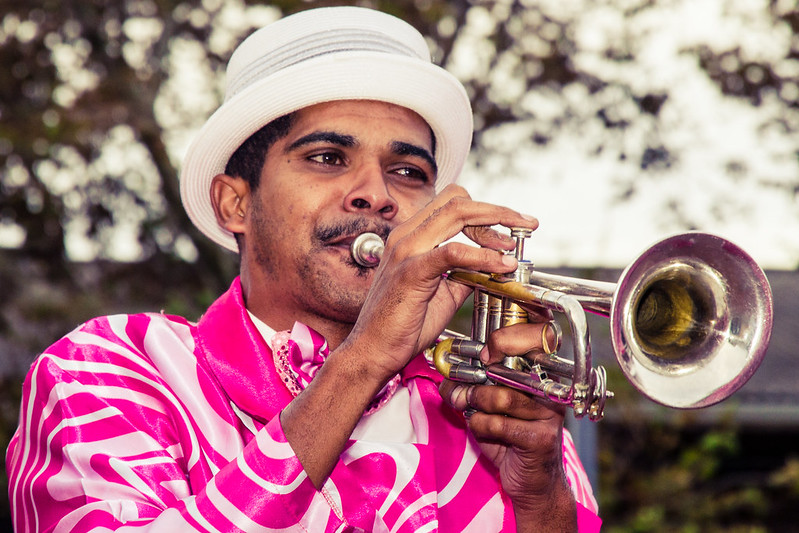Kaapse Klopse(Cape Town Minstrel Carnival)
South Africa’s Most Vibrant New Year Carnival of Color, Rhythm, and Pride
2026/01/01 - 2026/01/08
Every New Year, the streets of Cape Town burst with the music, color, and joy of Kaapse Klopse (Cape Town Minstrel Carnival). For more than a week, over 10,000 minstrels in dazzling costumes sing, dance, and parade through the city. This festival, rich in community pride and history, is a multi-sensory South African experience like no other.
Satin jackets and feathered hats shimmer in the sun, children’s laughter and confetti fill the air, banjos and brass bands set the rhythm, and the aroma of grilled meat and spices drifts from food stalls. Kaapse Klopse is a living legacy of freedom, creativity, and unity—anyone can join the dance and feel the spirit of Cape Town.
Main Attractions
Grand Parade & Minstrel March
The heart of the festival is the Grand Parade, where over 10,000 minstrels in colorful costumes march through the city, performing traditional “moppies” (comic songs) and synchronized dances. Each troupe competes for applause and cheers, and the energy is so infectious that even spectators join in the dancing.
Stadium Competitions & Troupe Performances
After the parade, stadiums like Athlone Stadium host competitions for best band, choir, and costume. The harmony, dance, and costume artistry on stage are a highlight for families and music lovers, showcasing South African showmanship and pride.
Costumes and Decorations
Minstrels wear satin suits in turquoise, pink, gold, purple, adorned with sequins, feathers, and bow ties, with faces painted white or sparkling with glitter. The city is decorated with banners, balloons, and ribbons, transforming into a carnival wonderland. The feel of silk and the flash of metallic trim add to the sensory delight.
Traditional Food & Drink
The festival features Cape Malay treats like koeksisters (syrup-soaked donuts), samoosas, pickled fish, boerewors rolls (sausage in bread), and bunny chow (curry-stuffed bread). The scent of grilled meat, spices, and fresh bread, along with cool drinks and ice lollies, completes the summer carnival atmosphere.
Cultural and Historical Background
The history of Kaapse Klopse (Cape Town Minstrel Carnival) dates back to the early 19th-century Cape Colony. At that time, many enslaved people from Africa, Asia (especially Malaysia and Indonesia), and Europe lived in Cape Town. For them, January 2nd—“Tweede Nuwe Jaar” (Second New Year)—was the only day of the year when they were freed from their masters and allowed to celebrate. On this day, they expressed joy and solidarity through singing, dancing, and parades, celebrating a rare moment of liberation from oppression.
The music, costumes, and dances of the carnival blended African, Malay, and European influences, developing into a unique style. The minstrels performed “moppies,” comic songs rich in satire and humor, sung in Afrikaans, English, and Creole, symbolizing the community’s identity and spirit of resistance.
During apartheid (1948–1994), Kaapse Klopse was temporarily banned and suppressed under racial segregation policies, but it continued as a form of “quiet resistance” to preserve community pride and freedom. After democratization in the 1990s, the carnival returned to public celebration, growing into one of South Africa’s largest festivals—a symbol of unity, reconciliation, historical memory, freedom, and equality for Cape Town’s diverse citizens.
Today, Kaapse Klopse features over 60 troupes (music and dance teams) and more than 13,000 participants parading through the city for over a week, celebrating the New Year with music, dance, and vibrant costumes. The festival plays an important role in community cohesion, youth development, and historical education, and is a “living cultural heritage” that shares Cape Town’s multicultural identity with the world.
Participant Voices
I went to see the parade with my children, and before I knew it, we were dancing with strangers. Everyone was smiling, sharing food, singing, and I felt truly happy. The flood of color and sound was overwhelming. A local explained the meaning behind the songs and costumes, and I realized this was more than entertainment—it was a festival of history, hope, and belonging.
Fun Facts
- The festival’s origins come from the emancipation celebration “Tweede Nuwe Jaar” (Second New Year).
- Many songs are “moppies”—satirical songs in Afrikaans and English.
Festival Dates
Kaapse Klopse is held every January at various locations throughout Cape Town. Dive into the parades, food, music, and dance, and experience the magic of South Africa’s greatest carnival for yourself.
The event schedule is subject to change. Please check the official website for the most up-to-date information.
Information
| Name | Kaapse Klopse(Cape Town Minstrel Carnival) |
| Country | South Africa |
| Area | Cape Town |
| Date | 2026/01/01 - 2026/01/08 |
| Link |
Upcoming Festivals
Dia de la Virgen de Guadalupe Mexico
A Festival Weaving Faith, Fervor, and Mexican Identity
2025/12/11L'Escalade Switzerland
Geneva’s Grand Winter Festival of Courage, Chocolate, and Community
2025/12/12Umkhosi Wokweshwama South Africa
The Zulu First Fruits Festival—A Sacred Celebration of Land, Ancestors, and Renewal
2025/12/12Lucia Festival (St. Lucia's Day) Sweden
A Festival of Light Illuminating the Nordic Darkness
2025/12/15Las Posadas Mexico
The Luminous Quest for Sacred Shelter
2025/12/22Noche de Rabanos (Night of the Radishes) Mexico
A celebration blending art, farming heritage, and cultural traditions
2025/12/23Chant of the Sybil on Majorca Spain
A Medieval Prophecy Echoes Through Majorcan Christmas
2025/12/23‘Hatajo de Negritos’ and the ‘Hatajo de Pallitas’ Peru
A Christmas Festival of Rhythm, Faith, and Afro-Andean Heritage in Peru’s Ica Region
2025/12/24Harbin International Ice and Snow Sculpture Festival China
A Frozen Wonderland Where Art and Adventure Merge
2025/12/24Takanakuy Peru
The Andean Festival of Reconciliation by Fist—How Confrontation Creates Year-End Peace and Bonds



